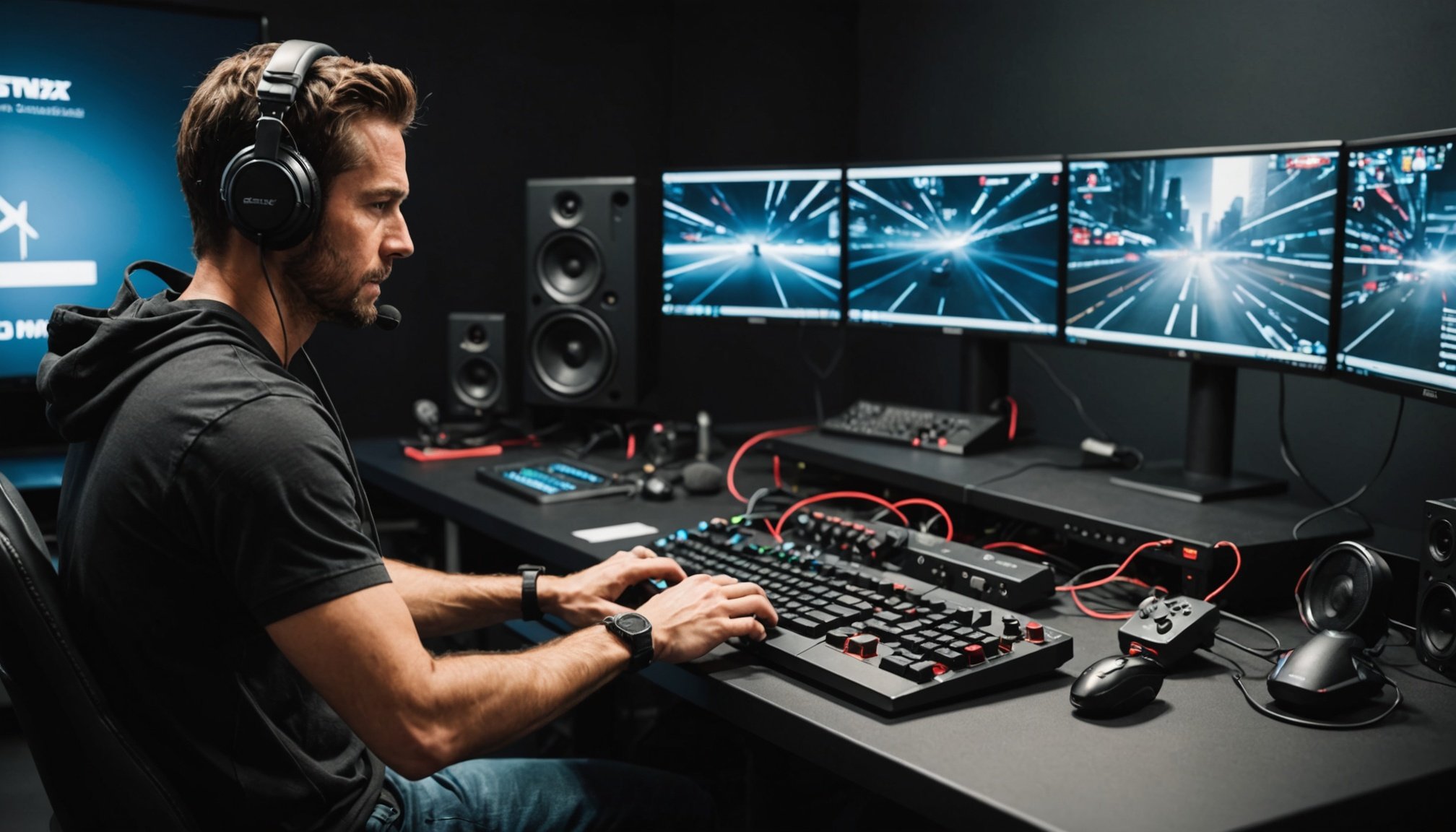Understanding Input Lag
Input lag is a delay between an action performed using a controller or keyboard and the corresponding response on the display. It is a critical factor in competitive gaming as it directly impacts players’ reaction times and overall gameplay responsiveness. A lower input lag provides an advantage in fast-paced games where fractions of a second can determine victory or defeat.
Console performance can vary significantly in terms of input lag. Different consoles handle input and display interactions in unique ways due to hardware and software differences. Some consoles may have optimized settings that inherently reduce input lag, benefiting players in competitive environments. For instance, newer generation consoles often boast improved architectures designed to minimize this delay.
This might interest you : Mastering Character Fairness in Fighting Games: Proven Strategies for Balanced Gameplay
The influence of input lag extends beyond mere milliseconds. It can affect physical responses, such as how quickly a player reacts to in-game events, which is crucial for genres like first-person shooters or racing games. Understanding and optimizing input lag is essential for any gamer looking to improve their competitive edge and enhance their overall gaming experience. By utilizing the right technology and settings, gamers can ensure their console performance is as seamless as possible, leading to more successful gaming sessions.
Techniques to Reduce Input Lag
Gaming enthusiasts understand the significance of reducing input lag for an optimal experience. Implementing effective gaming techniques can substantially enhance performance and responsiveness.
Additional reading : Navigating Cosmic Challenges: Breaking Down Real-World Physics Barriers in Space Simulation Games
Adjusting Display Settings
To tackle input lag, start by focusing on your display. The refresh rate is crucial; a higher rate can lead to smoother motion and quicker response times. When adjusting settings, aim for a resolution that balances visual quality and speed. Often, shifting to a ‘Game Mode’ over a ‘Standard’ mode on your TV or monitor can reduce additional processing, thereby lessening lag.
Utilizing Gaming Accessories
Investing in high-quality gaming accessories is another strategy. Controllers specifically designed for rapid response can make a noticeable difference. Wired connections, though sometimes less convenient, typically offer faster and more stable performance compared to wireless options. Gaming headsets can also assist in discerning audio cues swiftly, adding to tactical advantages.
Optimizing Console Settings
Delve into your console’s settings for performance boosts. Reduce graphical settings if needed, as simplified graphics can lead to faster processing. Optimize your network setup, ensuring minimal interference, and maintain updated system software. Each adjustment contributes to a smoother, more responsive gaming session, maximizing your potential in competitive scenarios.
Monitoring and Testing Input Lag
Maintaining a competitive edge in gaming often involves understanding and managing input lag. A myriad of tools are available to aid in input lag testing and performance monitoring. Engaging in these practices empowers players to make data-driven choices for enhanced gameplay.
Tools and Software Options
Various tools, like LagTesters and Input-Lag Checkers, provide precise measurements. They gauge the delay from controller input to on-screen response. Using these, gamers can compare setups or identify existing lag issues. Software applications like OSTest offer analytics to track performance changes over time.
Conducting At-Home Tests
Performing tests at home ensures an environment reflective of regular gaming sessions. To execute, connect diagnostic tools to your system and run typical games. This allows you to observe potential lag discrepancies between sessions. Reviewing results assists in pinpointing whether hardware, settings, or other factors impact your gaming.
Importance of Continuous Monitoring
Regular input lag monitoring integrates into a holistic strategy for performance optimization. Identifying fluctuations in lag can highlight underlying issues before they become detrimental. By monitoring this frequently, players can maintain consistency and achieve ongoing tweaks to foster a more competitive gaming scenario.
Hardware Solutions for Minimizing Lag
For gamers seeking to gain a competitive edge, leveraging the right hardware solutions can significantly enhance performance and reduce input lag.
Best Monitors for Gaming
The choice of monitor is vital in input lag reduction. Monitors with low response times and high refresh rates ensure smoother gameplay. Models such as the ASUS ROG Swift or Acer Predator series are often recommended due to their minimal delay promise. Features like adaptive sync can further aid in optimizing gaming visuals, reducing the disconnection between virtual action and perception for an enhanced experience.
Networking Gear
To maintain seamless gameplay, reliable networking gear is essential. Routers with Quality of Service (QoS) settings allow users to prioritize gaming traffic, ensuring a lag-free connection, particularly in multiplayer setups. Opt for routers with advanced features like dual-band frequencies. While wireless connections offer convenience, wired setups often provide more stability, reducing potential downtime.
Recommended Consoles
Choosing the right console can significantly impact input lag reduction. Next-generation consoles, like the PlayStation 5 and Xbox Series X, are engineered for high performance with optimized architecture, resulting in lessened delay. Considering upgrade paths is wise if you’re aiming for efficiency in competitive gaming scenarios. These consoles boast features that prioritize speed and accuracy, aiding in dominating competitive landscapes.
Analyzing Game-Specific Settings
Achieving a competitive edge requires understanding how game-specific optimization impacts input lag. Each game might present unique settings that can be tailored to reduce lag and improve overall performance.
Popular Multiplayer Games
Different titles display varying levels of input lag due to their design and network demands. Games like “Call of Duty” and “Fortnite” are often discussed among competitive gamers for their responsiveness. Adjusting in-game settings such as shadows, anti-aliasing, and effects can lessen processing demands, thus reducing input lag. Players frequently suggest disabling unnecessary features to enhance performance. Community forums offer insights and proven methods for tweaking settings in specific games, aiming to shave off those vital milliseconds.
Customizing Control Layouts
Personalized control layouts empower players to react faster. By remapping buttons to suit individual play styles, gamers can enhance dexterity and response times. Software tools enable advanced customization, allowing players to find the optimal configuration. These modifications are particularly advantageous in fast-paced games where quick reflexes are paramount.
Learning from Professional Gamers
Professional gamers are often at the forefront of innovation in lag reduction strategies. Observing these experts can provide invaluable insights. They often share tips and techniques in interviews and on gaming channels, guiding enthusiasts toward achieving an upper hand in competitive environments.






